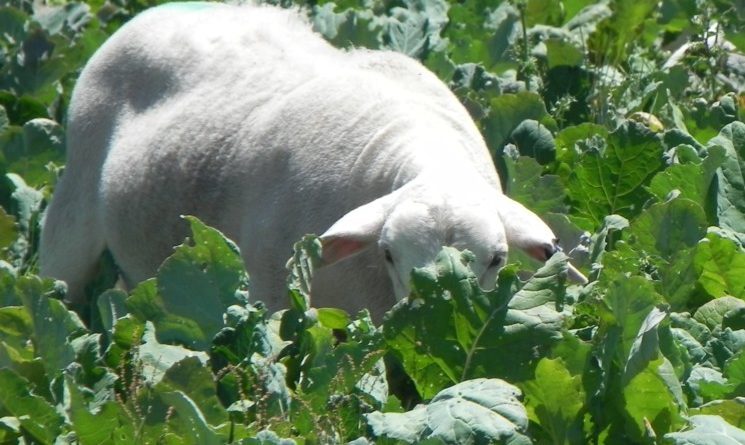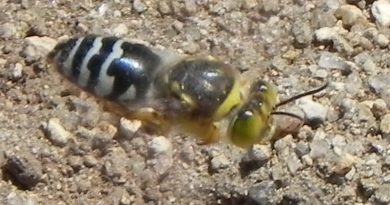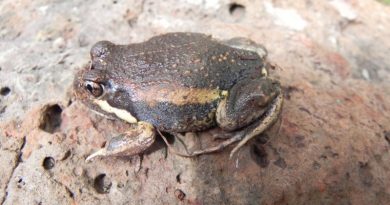Brassica makes lamb finishing difference
By Patrick Francis
In my autumn 2016 Moffitts Farm Update I referred to a trial with Winfred brassica as a summer/autumn fodder crop to finish lambs. Growth rates up to 400grams/day (g/d) were achieved so it we decided to embark on a brassica sowing program which would enable all 2016 spring drop lambs to finish on the fodder crop over summer, autumn and winter.
The November sown Winfred brassica met our expectations with lambs average growth rates at 200g/d with two animals achieving 440g/d which is extraordinary. Most importantly the brassica enabled us to supply our exclusive outlet, the Meat Smith butcher in Fitzroy, with pasture finished lambs over nine months at its preferred carcase weight of around 25kg.
Figure 1: Our highest weaning weight lambs averaged around 300g/d liveweight gain on Winfred brassica in January and February. Two animals gained above 400 g/d. Photo: Patrick Francis.
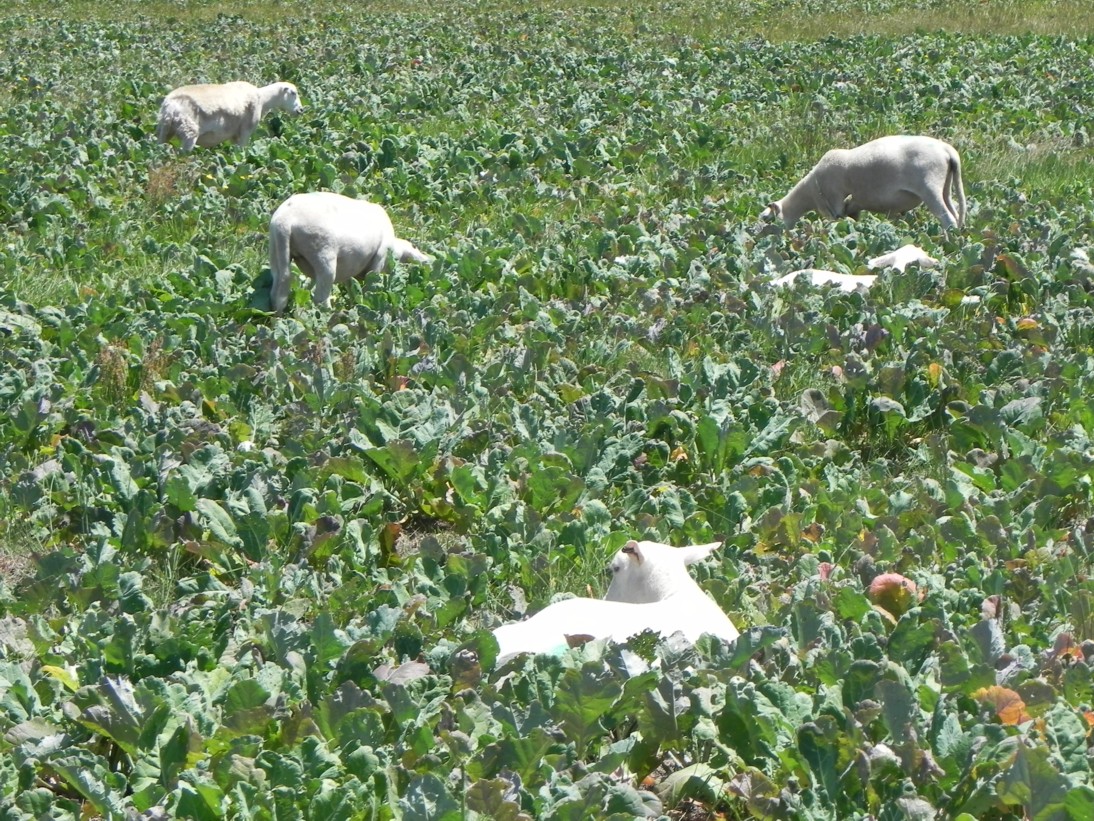
Our strategy this year was to start lambs on brassica once they reached 35kg live weight on year-round-green pastures and send them for processing between 45 and 55kg live weight. An exception to this rule was trialed this year in January – February when a small number of the below average weaning weight lambs (mostly twins) between 22 and 28kg live weight were put on the brassica as a means of boosting their weight before returning them to perennial pasture to grow out to 35kg live weight. My thinking behind this strategy is that their low weaning weights most likely reflected their litter size status (a twin) and dam’s milking ability more than their post weaning growth rate potential.
Because we pedigree match ewes and lambs, over the last four years we have been able to identify total weaning weight per ewe per year. We identified about 2% of ewes which maintained their own weights during lactation (what I called resilient ewes) but reared low weight lambs – less than 50kg total lamb weaning weight with twins. In contrast, we identified resilient ewes producing more than 35kg weaning weight single lambs and more than 60kg weaning weight with twins, figure 2. It is the latter resilient ewes we want in the flock and since 2014 we cull the well below average lamb weaning weight ewes.
Figure 2: One of our genetic selection criteria is ewe resilience. This ewe demonstrates high resilience by maintaining good body condition while rearing in excess of 60kg lamb liveweight at weaning at 12 – 14 weeks.
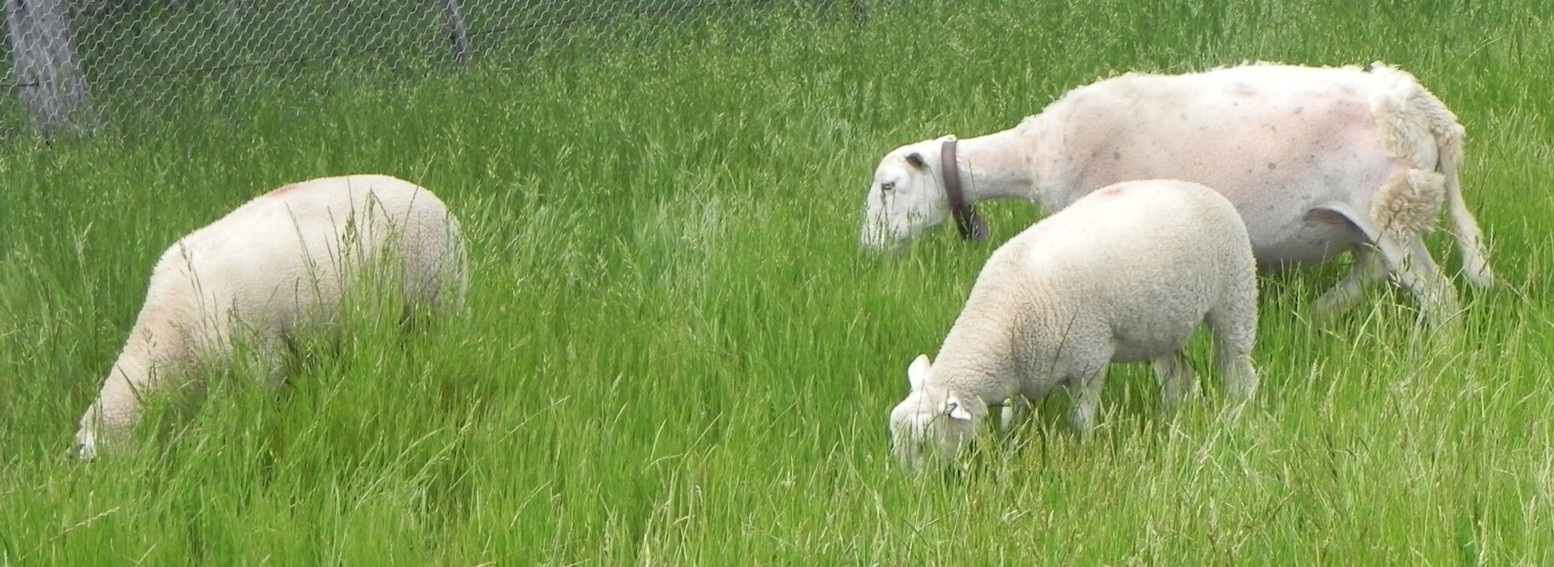
This strategy had the immediate impact of removing the genetically poor growth rate lambs from the weaned group. These so called slow growth lambs were not finishing before they became two tooth animals and even then their mature live weight seemed to peak about 50kg.
By winter in 2017 the low weaning weight lambs have been returned to grazing brassica starting at an average 35 kg live weight. Most of these lambs are gaining between 175 and 250g/d so will be suitable for processing before two teeth erupt in late September/October.
Brassica inexpensive to grow
Sowing brassica if you own the required machinery is relatively inexpensive. Our costs were:
* Winfred seed 3kg/ha at $8/kg = $24
* Glyphosate (560g/l) herbicide 2litres/ha at $8/l = $16
* DAP fertiliser at 100kg/ha at 8 cents/kg = $80
* Tractor diesel for two passes two hours/ha using 1.5l/ha/hr at $1.30/l = $3.90
* Total cost: $124/ha (labour not included)
Figure 3: Direct drilled brassica can look hit and miss about a month after sowing (early November 2016), but the low plants per square meter means they usually grow in summer without moisture restriction. Between January and July this paddock carried 1419 dry sheep equivalents per hectare as finishing lambs over 82 grazing days with the cost of the herbage being 8.7cents per kg dry matter. Photo: Patrick Francis.
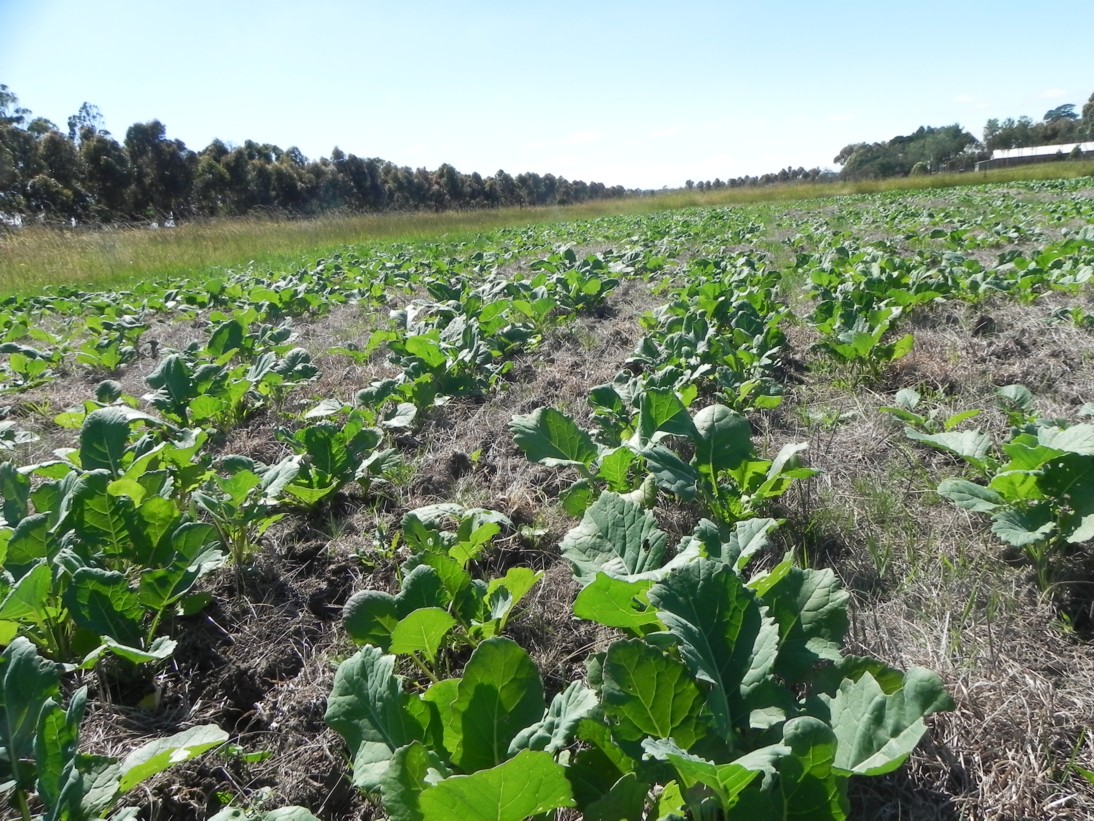
Brassica paddock livestock carrying capacity
It is difficult to determine the precise carrying capacity of the brassica in our paddocks as our management for safe consumption of this feed requires about 20% of the paddock remaining as pasture. While brassica has a higher digestibility and metabolisable energy content than green mixed pasture some species and varieties may contain “anti-nutritional” components which may cause lambs problems if fed as an exclusive diet.
While the “anti-nutritional” component story is complex with its plant percentage level varying between brassica varieties, amount of fertiliser applied and soil Sulphur level, the Moffitts Farm low fertiliser input approach plus the use of Winfred variety and leaving 20% of the paddock area as pasture has averted any “anti-nutritional” impacts. The excellent growth rates and general good health of the lambs while eating brassica suggests this is the case.
Our two Winfred brassica paddocks carried 897 dse/ha over 92 grazing days and 1419 dse/ha over 82 grazing days between February and July. This involved three separate grazings. Based on our cost to direct drill sow the brassica, one paddock produced feed at 8.7cents/kg herbage dry matter and the other at 13.8cents/kg herbage dry matter. This cost per kg dry matter is far lower than what it would cost to finish lambs on pasture and supplement them with grain, pellets or silage.
As well, the brassica sowing is part of our pasture renovation program. The brassica is sown into paddocks where the more desirable species density is declining and they are being replaced with annual grasses, bent grass and sweet vernal. In the spring following the brassica the paddocks are direct drilled with a mix of winter active and summer active perennial grasses, clovers and herbs.
Hunter brassica disappointed
It is important to note our brassica experience was not all positive. In researching varieties to sow I decided to trial what is termed an “early” variety, Hunter, which the seed company described at ready for grazing in about 8 weeks post sowing. By comparison Winfred is ready for grazing about 12 weeks post sowing. My thinking being that with sowing in November, the Hunter would be ready to graze by the heaviest weaning weight lambs in mid-January; they or next group would shift to Winfred in mid-February.
While the Hunter germinated, grew well and was ready for grazing in early-January we didn’t start grazing it until late January. But something was not right with the lambs grazing it. With any different herbage other than pasture, lambs take 5 to 10 days to become acquainted with it and start eating it. But with Hunter, I noted at day 10 that around 50% of the lambs were grazing only the pasture surrounding the brassica. By day 20 I was so concerned that we weighed the lambs and found the average weight gain was just 100g/d with some lambs not growing at all. This was despite a large amount of brassica feed being available, figure 4. This brassica variety had a palatability problem in our paddock last summer.
Discussion with the seed supplier agronomist suggested that Hunter needs to be grazed at its six to eight weeks post sowing and if not palatability declines. Its palatability issue may have been exacerbated by 50% below average rainfall in January. In the agronomists opinion we should have started grazing the Hunter in early-January if we were to avoid a possible palatability problem. I suspect Hunter’s palatability is associated with soil moisture content and as this declined in January through to March so did its palatability.
In contrast, the Winfred brassica had no palatability problem at any time with the same below average rainfall in January, February and March.
Figure 4: By mid-January the Hunter brassica had grown a considerable amount of what looked like palatable herbage but the lambs had a different opinion and grew slowly on it. Some lambs were only eating pasture surrounding the Hunter. The paddock was grazed by ewes and sown to pasture in April. Photo: Patrick Francis.
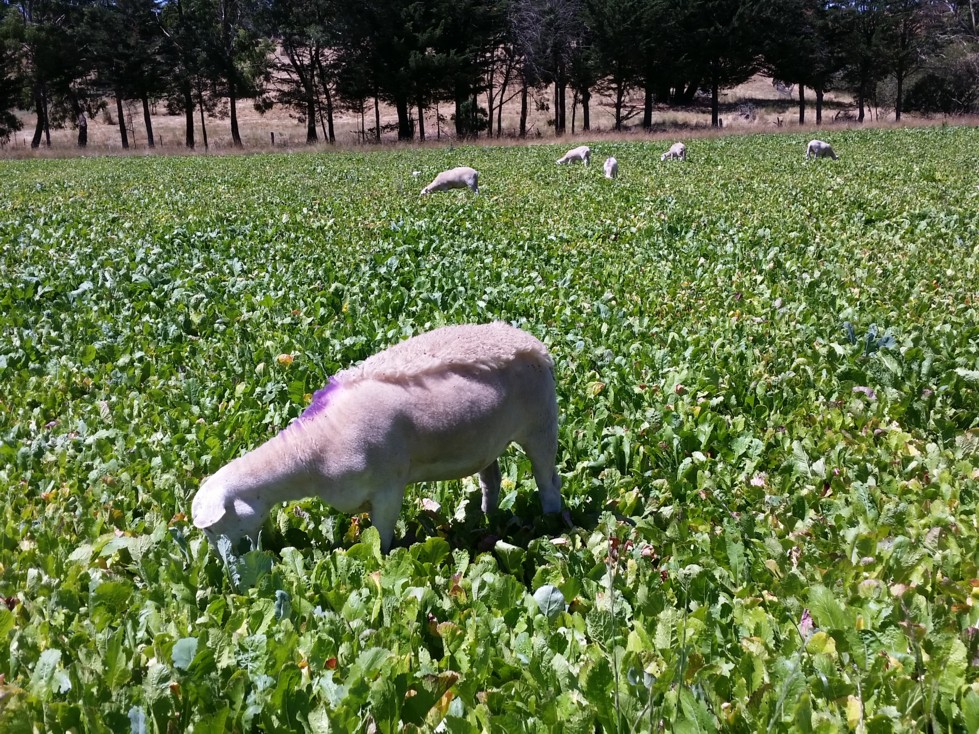
Take home message
Brassica has been demonstrated as the most cost effective pasture species for finishing heavy trade lambs over summer, autumn and winter on Moffitts Farm. The alternatives such as supplementary feeding lambs with pasture silage, lucerne silage or pellets are in our experience more expensive per kg dry matter fed, more labour time consuming and result in more variable lamb growth rate performance.
Palatability of brassica was found to be different across species with Winfred highly suitable in this regard. It also had reasonable low rainfall resilience then good recovery once average rainfall returned in April.
Lambs need up to 10 days to adjust to eating brassica so it is important for live weight gain continuity and to maintain rumen health that alternative feed is available in the same paddock in the form of high quality pasture (or another familiar feed such as pasture silage) during the transition. We ensure this by leaving approximately 20% of the brassica paddock area as pasture. All our paddocks contain a proportion of summer active perennial grasses species so that in the three months from sowing brassica to grazing it these species have grown around 3000 – 4000kg/ha of fresh green dry matter for the lambs to graze and transition from perennial grasses to brassica.

